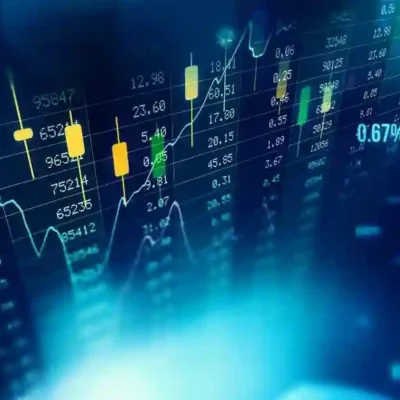In the fast-paced and unpredictable world of forex trading, mastering the psychology of risk is essential for achieving long-term success. Volatility, the magnitude of price fluctuations in the market, poses both opportunities and challenges for forex traders. In this article, we delve into the psychology of risk management in forex robot trading, exploring strategies to navigate volatility, mitigate losses, and optimize trading performance amidst the ever-changing dynamics of the forex market.
Understanding Volatility in Forex Trading:
Volatility is a fundamental aspect of the forex market, driven by factors such as economic indicators, geopolitical events, and market sentiment. High volatility presents opportunities for profit as prices fluctuate rapidly, offering potential trading opportunities. However, it also increases the risk of losses, as prices can move against traders’ positions just as quickly. Managing volatility effectively is essential for forex traders to preserve capital, minimize losses, and capitalize on trading opportunities in the dynamic forex market.
The Psychology of Risk Management:
Risk management is a critical component of successful forex trading, encompassing strategies and techniques to control risk exposure, protect capital, and optimize trading performance. The psychology of risk management revolves around understanding and managing the emotional and psychological factors that influence traders’ decision-making processes. Key psychological principles that impact risk management in forex robot trading include:
- Fear and Greed: Fear and greed are two powerful emotions that drive market participants’ behavior and decision-making processes. Fear of losses can lead traders to hesitate or exit trades prematurely, while greed can tempt them to overleverage or chase high-risk trades. In forex robot trading, it’s essential to recognize and mitigate the influence of fear and greed on trading decisions by adhering to predefined risk management rules and maintaining discipline in executing trading strategies.
- Loss Aversion: Loss aversion refers to the tendency for individuals to prefer avoiding losses over acquiring equivalent gains. Traders may become overly cautious or hesitant to accept losses, leading them to hold onto losing positions in the hope of a reversal. In forex robot trading, it’s crucial to accept losses as a natural part of trading and to implement stop-loss orders and risk management techniques to limit the impact of losses on overall portfolio performance.
- Confirmation Bias: Confirmation bias is the tendency for individuals to seek out information that confirms their existing beliefs or biases while ignoring contradictory evidence. Traders may selectively interpret market information to support their trading decisions, leading to overconfidence or cognitive errors. In forex robot trading, it’s important to maintain objectivity and rely on data-driven analysis rather than succumbing to confirmation bias. By evaluating market conditions objectively and adjusting trading strategies based on empirical evidence, traders can make more informed and rational decisions.
- Overconfidence: Overconfidence is a common cognitive bias where individuals overestimate their abilities or the accuracy of their predictions. Traders may become overconfident in the performance of their forex robots, leading them to take excessive risks or deviate from their risk management rules. In forex robot trading, it’s essential to maintain humility and objectivity, continually evaluating and refining trading strategies based on empirical evidence and performance metrics rather than relying solely on subjective confidence.
- Regret Aversion: Regret aversion is the tendency for individuals to avoid actions that may lead to regret or remorse in the future. Traders may hesitate to take decisive action or accept losses out of fear of regretting their decisions later. In forex robot trading, it’s important to focus on the long-term objectives and adhere to predefined risk management rules, rather than succumbing to regret aversion or emotional biases. By accepting losses as a natural part of trading and focusing on consistent execution of trading strategies, traders can overcome regret aversion and maintain discipline in their trading operations.
Strategies for Managing Volatility in Forex Robot Trading:
Managing volatility effectively in forex robot trading requires a combination of risk management techniques, psychological discipline, and strategic decision-making. The following strategies can help traders navigate volatility and optimize trading performance:
- Implement Robust Risk Management Rules: Define clear risk management rules and parameters for forex robot trading, including stop-loss levels, position sizing strategies, and maximum drawdown limits. By adhering to predefined risk management rules, traders can control risk exposure, protect capital, and minimize losses during periods of volatility.
- Diversify Trading Strategies: Diversify forex robot portfolios by deploying multiple trading strategies with different risk-return profiles and market sensitivities. By diversifying across strategies, traders can spread risk and capitalize on diverse trading opportunities, reducing the impact of volatility on overall portfolio performance.
- Monitor Market Conditions Closely: Stay informed about market developments, economic indicators, and geopolitical events that may impact currency prices and market volatility. Monitor market conditions closely and adjust trading strategies accordingly to capitalize on emerging opportunities or mitigate risks associated with volatile market environments.
- Stay Disciplined and Emotionally Resilient: Maintain discipline and emotional resilience in forex robot trading by adhering to predefined trading rules and risk management guidelines. Avoid succumbing to emotional biases such as fear, greed, or overconfidence, and focus on executing trading strategies consistently and objectively.
- Regularly Evaluate and Adjust Trading Strategies: Continuously evaluate and refine forex robot trading strategies based on empirical evidence, performance metrics, and market feedback. Identify areas for improvement, optimize strategy parameters, and adapt trading strategies to changing market conditions to enhance trading performance and resilience to volatility.
Conclusion:
Navigating volatility in forex robot trading requires a combination of robust risk management techniques, psychological discipline, and strategic decision-making. By understanding the psychology of risk management and implementing effective strategies for managing volatility, traders can optimize trading performance, preserve capital, and achieve long-term success in the dynamic and unpredictable world of forex trading. As traders continue to navigate through the complexities of the forex market, mastering the psychology of risk management will remain essential for achieving consistent profitability and resilience in forex robot trading.



